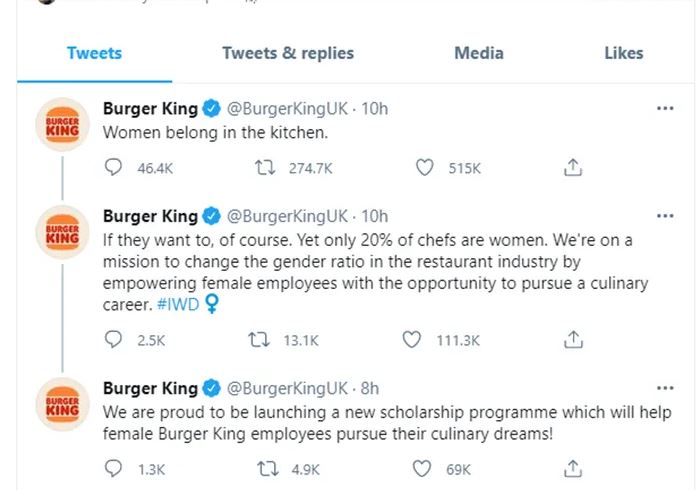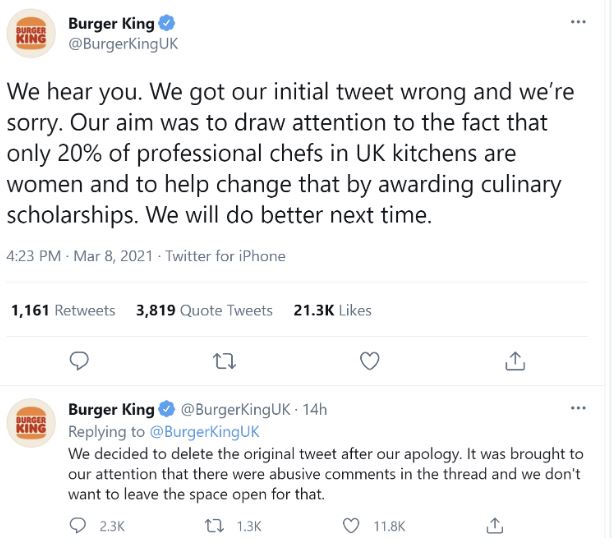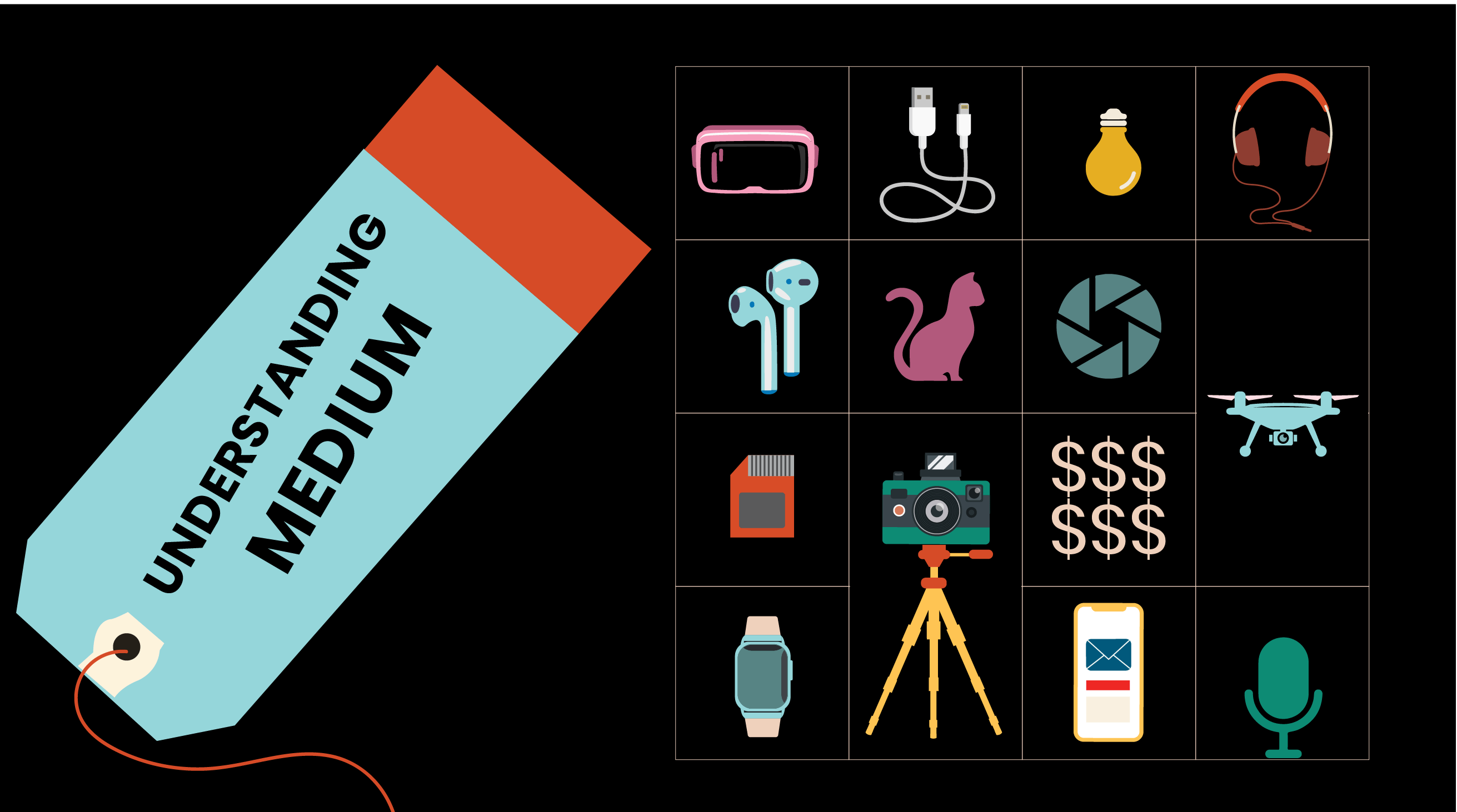Applying “The Medium is the Message” Theory to Marketing Today
How the medium affects the messages we deliver in a digital age
September 13, 2023
Introduction
In Part 1 - Is the Medium Still the Message? , we learned about Marshall McLuhan’s theory on mass media – that the medium through which we deliver messages has a transformative effect on how we consume information, how we think, and engage with each other.
McLuhan’s theory also offers a helpful lens through which to view and understand the strategies that drive consumer engagement and brand communication in the digital age.
His insights serve as a navigational tool, guiding us to be more aware that the platforms we choose carry a significant impact on how our audience perceives and interacts with our brands – not to mention society as a whole.
By weaving McLuhan's theory into contemporary marketing approaches, businesses can uncover novel ways to create meaningful connections between the medium and the message. In turn, this helps brands find new ways to deeply resonate with their target demographics and stand out in a crowded digital landscape.
Executive summary – bottom line up front
To honour your time and promote accessibility, we always provide key takeaways at the top of our longer content pieces.
Here are seven ways “The Medium is the Message” still matters to modern marketing:
- Medium-message alignment: The choice of communication medium can shape how your message is received. Different platforms (e.g., social media, email, video, podcasts) have distinct characteristics that influence the way content is consumed and interpreted. Marketers need to consider how the medium they choose aligns with their brand and message.
- Content adaptation: The characteristics of the medium often dictate the type of content that works best. Short-form content may excel on platforms like Twitter, while longer videos are better suited for YouTube. Adapting content to fit the medium is crucial for resonating with the audience.
- Interactivity and engagement: Interactive mediums (live streams, polls, interactive ads) can engage audiences more effectively. They encourage active participation and create a sense of involvement, making the message more impactful.
- Contextual relevance: The medium itself conveys a sense of context. Marketing messages that align with the context of the medium (such as using humor on social media) are more likely to resonate with the audience.
- Attention and distraction: Some mediums inherently compete for attention more than others. In a world filled with distractions, marketers must capture and maintain attention quickly, which may involve adjusting the message based on the medium.
- Cross-media consistency: Consistency across different mediums is crucial for building a coherent brand image. The message should be adapted to fit the medium, but core values and branding elements should remain consistent.
- New technologies: As new technologies emerge, they bring unique ways of interacting with content. Virtual reality, augmented reality, and interactive AI-driven experiences all represent opportunities to redefine how messages are conveyed and experienced.
In essence, McLuhan's theory highlights that the choice of medium has profound implications for how a message is received, understood, and acted upon.
Marketers who understand this concept can strategically align their message with the medium to create more impactful campaigns and foster stronger connections with their target audience in today's ever-evolving digital landscape.
Medium-message alignment
Medium-message alignment is considered a cornerstone of effective communication. When the content we deliver aligns harmoniously with the platform we choose it:
- Conveys information coherently,
- Engages audiences meaningfully, and
- Ultimately foster a more profound and lasting impact with our target audience.
Putting the wrong message in the wrong medium can cause confusion and even backlash.
Take Burger King’s 2021 International Women’s Day tweet

While the intentions of the tweet were to announce a new scholarship program for female employees to pursue their culinary dream, the first tweet employed a click-bait strategy stating:
“Women belong in the kitchen.”
Burger King followed up with subsequent tweets trying to give more context, but faced such backlash, they ultimately deleted the original tweet.
 This is a great example of using the wrong medium – a platform intended to deliver short immediate communications – for a message that was not only insensitive, but required context and a larger conversation around women in professional kitchens.
There are so many other ways they could have launched this campaign. For example, they could have:
This is a great example of using the wrong medium – a platform intended to deliver short immediate communications – for a message that was not only insensitive, but required context and a larger conversation around women in professional kitchens.
There are so many other ways they could have launched this campaign. For example, they could have:
- Solicited user generated content to celebrate women working in the culinary arts.
- Partnered with a female celebrity chef and set up a meet and greet with scholarship winners.
- Created a short video that shows the struggle women face as they pursue their dream of culinary arts and show what this scholarship means.
Message-medium alignment is essential in order to prevent confusion (and even backlash) from your audience. Here is what you need to consider in order to avoid putting the wrong message in the wrong medium:
- Platform selection
McLuhan’s theory helps us be more aware of how certain communication channels can amplify the intended message. By matching content to the characteristics of specific platforms (social media, email, video), marketers can enhance the message's impact.
Platforms need to be selected using two criteria: your target audience’s preferences; and your resourcing as a marketer.
There is, obviously, no merit in selecting an app or platform that will not get your message in front of the right audience. You need to meet your audience where they are – go to the apps/platforms they already use.
On the other hand, this also needs to be weighed against what you can realistically achieve based on your budget and resourcing.
For example, if you have the ability to create a lot of video content, then Facebook, YouTube, and Instagram are a natural fit. TikTok is super popular (obviously), but to be effective, TikTok recommends posting 1-4 times per day.
For most marketing teams, TikTok’s frequency is hella-unrealistic unless there is enough of a business case or a large enough budget/staffing complement to justify this level of effort.
The worst thing you can do for your brand is to commit to any app without having the ability to regularly produce quality content at the frequency your audience expects.
- Brand alignment and cross-media consistency
Strategic alignment between content and medium contributes to consistent branding across all touchpoints. A unified strategy helps build trust and recognition among consumers – maintain your brand integrity.
While there are a plethora of theories and acronyms associated with what goes into a brand, but it really boils down to is ensuring these three elements align:
- Audience: Understanding the nature and sentiment of your audience, including their wants, likes, hopes, fears and aspirations for your brand is key. This means investing in accurate and relevant first-party data to better understand your customers and segments and their impressions of your brand.
This information will help you gauge if the outward expression of your brand matches what you're trying to promote. It will also inform you about what mediums will help you engage best with your customers.
- Visual: The visual elements – including logo, colour palette, typography, mood, images, etc. – need to be consistent between all platforms and in real life.
Assets should always be created for each channel and type of use so that we have cand expectations should always be laid out and reinforced through a visual branding guide.
This is especially challenging for companies who must traverse the digital customer experience alongside the in-person customer experiences. Differently-sized bricks and mortar stores or different business models, such as licensed-concepts or franchises, can make this especially challenging.
- Written/Language: This is a brand’s tone, voice, word choice, key messaging and frequency of communication which, of course, need to align with the brand promise – that outward expression of a company’s core offering.
Again, all this should be captured and reinforced within a Style Guide and potentially, a separate Social Media Style Guide. Pro-tip: You should update these guides at least once per year to keep them relevant.
Brand personality
These three elements – the audience, the images, and the messages you put out into the world – combine to create the brand personality. As a HubSpot describes it:
“Simply put, a brand's personality is the set of human characteristics you attribute to that brand. Or, put another way — it's how you'd describe a brand if it were a person.”
To help drive home this concept, let’s revisit the classic “I’m a Mac/I’m a PC” campaign where Apple personified the PC and the Mac.
By literally bringing the two competing products to life, Apple created a new narrative around why the Mac was more fun and provided more accessible, everyday applications. The best part was they managed to maintain a positive and playful tone that never directly said PCs were inferior – instead they just highlighted the ways that Macs were better. (In an interesting meta-twist, Jason Long, the actor who portrayed “Mac,” defected to rep the Intel-based PCs in 2021.)
Large brands – like Apple, Nike, Coca-Cola – remain hallmarks of great brand consistency examples. It’s not a coincidence that many of these same brands are also the most valuable.
Contextual relevance
We all need to be mindful of contextual relevance when it comes to the medium we’re using to communicate. After all, each medium comes with its own set of written and unwritten rules and going outside these norms without a really good justification can jeopardize your reputation.
Here are two factors to consider:
-
- Platform context: Different mediums have their unique contexts and audience expectations. Adapting messages to these contexts enhances engagement and fosters genuine interactions with customers.
Selecting platforms that will resonate with your target audience and aligning content to match the expectations within that channel will ensure that you forge meaningful connections with your target audience.
To align with its message of diversity and self-acceptance, Dove effectively utilizes the visual medium of Instagram to show different images of what this looks like in real life. They partner with diverse women to showcase products and this in itself acts as their social proof that they are committed to investing in diverse, beautiful women. This is a great example of how content-medium alignment results in high engagement and widespread sharing.
- Cultural considerations: McLuhan’s theory reminds us that the culture surrounding a medium shapes perceptions. Marketers must tailor their messages to align with cultural norms and values to avoid misinterpretation.
This is just about aligning content to the medium, it’s about using the conventions of a medium to help further the message and a company’s brand.
A great example of using the cultural norms of a medium to advance your brand and reach is Wendy’s on Twitter.
Their witty and sarcastic responses resonate perfectly with the platform's quick, concise nature. By crafting messages that resonate within Twitter's context, Wendy's has managed to create relatable content that garners engagement and solidifies its brand voice

Engagement and interaction: harnessing interactivity
Engagement and interaction play a pivotal role within the framework of "the medium is the message” as the medium itself shapes the way content is perceived and experienced.
In this context, fostering active engagement and interaction is critical – plus this is what often delivers the social media Key Performance Indicators (KPIs) we are looking for when it comes to tracking our success on social media.
This approach not only captures attention, but also encourages meaningful participation, transforming passive recipients into active participants and forging a deeper connection between the content and its consumers.
This is how we help grow our audience and nudge them along the pathway to purchase or buyer’s journey.
Interactive experiences
Interactive mediums allow users to engage actively. Embracing interactive content within those mediums – like polls, interactive quizzes, live Q&A sessions on social media, and user generated content – can deepen customer engagement.
The great thing is there are simple, organic ways to utilize interactive experiences on your social platforms.
For example, creating a poll on LinkedIn could be a low cost, but effective way to garner organic engagement or customer feedback if that’s your go-to B2B platform or you’re looking to build your professional brand.
If you have a budget, then contests, giveaways, and challenges can generate buzz and engagement. There’s nothing like a deadline to create a sense of time urgency.
Just look at YouTube star Mr. Beast – his entire brand is built on ridiculous online and in-real-life giveaways, outrageous endurance tests, and challenges. His YouTube channel has over 178 million subscribers and he continues to smash records for most viewed videos.
Whatever your budget, you need to ensure the interactive tactic you select speaks to your target audience enough to drive engagement: a poll that falls flat by getting little engagement can harm your brand more than help it; a contest no one enters does not further your brand recognition.
Personalized communication
We know that personalized messaging resonates with individuals. Leveraging customer data to tailor messages that resonate with your customers can boost relevance and connection.
A great example of this is Starbucks' implementation of their mobile app and rewards program. When customers use the Starbucks mobile app to make purchases and participate in the rewards program, the company collects data on their preferences, purchase history, and behavior. This data enables Starbucks to send tailored offers and rewards directly to users' smartphones.
Additionally, the app provides users with real-time updates on new menu items, special promotions, and limited-time offers based on their past choices. By delivering content that aligns with their preferences and behaviors, Starbucks maintains a direct and engaging line of communication with its customers.
Attention economy and sustaining engagement
As attention becomes a precious commodity, the choice of medium significantly impacts the level of engagement and receptivity to the message.
The interplay between the medium and the attention economy can offer insights into how communication channels compete for their share of this scarce resource, and continue to shape the way we consume and process information in the digital age.
Capturing attention quickly
With average attention span down to 8 seconds, eliciting a strong, immediate emotional response through visuals or copy is the only way you’ll hold someone’s attention.
When Nike partnered with Serena Williams on the “Dream Crazier” campaign, they fully utilized the visual storytelling capabilities of the medium of YouTube. The resulting commercial was a mini-documentary about the barriers women have faced – and still face – in sports. Strong visuals that included historical footage of women in sports along with inspiring music and Serena Williams narration combined to create a visceral, emotional response.
The final message – “It’s only crazy until you do it.” – was written in white and emblazoned on a black background before fading to reveal Nike’s slogan “Just do it.” It challenge all female athletes to keep pushing to break boundaries in sports.
By exploiting the associated characteristics of a medium, we can evoke an emotional response that cuts through the social noise and makes your audience pay attention.
Scheduling posts at the right time
Another key factor in addressing the attention economy is posting your message at the right time. There is little value in sending a message or making a post live at a time period during which no one will pay attention.
But here’s where it gets a little tricky. Each app and platform have their own best times for audience engagement just as each social media marketing and monitoring companies have their own opinions on what works best.
According to Sprout, the best overall times to post on social media are:
- Mondays from 10 a.m. to noon
- Tuesdays from 9 a.m. to 2 p.m.
- Wednesdays from 9 a.m. to 1 p.m.
- Thursdays 9 a.m. to noon
- Fridays from 9 to 11 a.m.
- Best days to post on social media: Tuesdays and Wednesdays
- Worst days to post on social media: Sundays
Guidelines like these are great because they give you a general starting point, but the best way to find out what works for your target audience is to post, measure, and optimize as you go.
The more you experiment with types of posts, frequency, and timing, the more data you can collect in order to find the schedule that works best for your audience.
Sustaining engagement
Beyond initial attention, valuable content keeps audiences engaged. This involves providing valuable content that aligns with the audience's preferences, needs, and expectations.
The skincare and cosmetics brand Glossier is an industry leader when it comes to sustaining engagement and creating a loyal base of superfans. There are so many things they get so right – like the strategic use of user generated content on platforms like Instagram or using its blog Into the Gloss, for crowd-sourcing and product co-creation.
By crafting messages utilizing interactive elements provided within different mediums, we can sustain a continuous flow of engagement. This helps us transform initial curiosity from potential customers into a lasting and loyal brand connection.
New and emerging technologies
Emerging technologies exemplify how the medium profoundly influences the messages conveyed and the way we experience the world.
Technologies – such as Augmented Reality (AR), virtual reality (VR) – create immersive experiences that transcend traditional textual or visual communication, altering how messages are perceived.
A great example of this is IKEA’s AR app, IKEA Place, which helps customers virtually place true-to-scale 3D models in their houses before making a purchase. The app allows customers to experiment with home design and experience shopping in a new way.
We’d be remiss if we didn’t at least mention AI-driven interactions and their impact on fulfilling (and perhaps even driving) customer expectations.
For example, 58% of millennials expect to engage with brands whenever they choose. In the world of e-commerce, chatbots and conversational AI- systems are transforming the way companies communicate with their customers and prospects, allowing them to meet the 24/7 demand for customer service.
As McLuhan predicted, emerging technologies do not just convey information but also reshape how we communicate and experience the world.
Conclusion
Marshall McLuhan’s “The Medium is the Message” challenges us to be more strategic in the ways we approach modern marketing.
As communication channels diversify and technology evolves, understanding that the medium itself shapes the essence of the message will help us more skillfully navigate the intricate web of platforms, contexts, and user expectations.
By harnessing the unique potential of each medium, from social media to emerging technologies, marketers can create compelling narratives that bridge the gap between brands and audiences.
As we continue to traverse the dynamic landscape of modern marketing, McLuhan's theory serves as a reminder that the medium carries inherent influence, shaping how messages are received, internalized, and embraced by audiences in this ever-evolving digital era.
Additional Resources
If you enjoyed this article, here is a list of resources to help you learn more about Marshall McLuhan.
Websites
Books
Videos
 Talk to a person
Talk to a person





